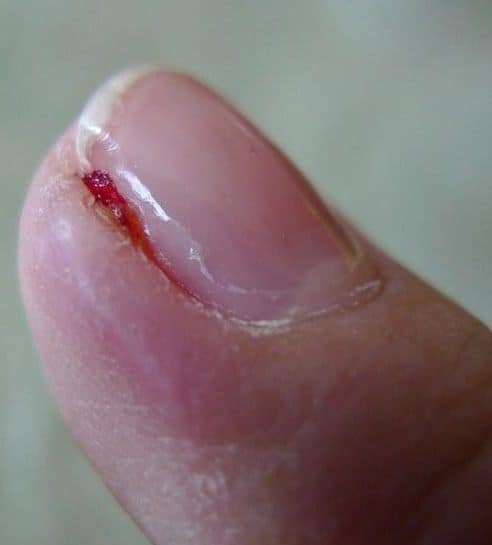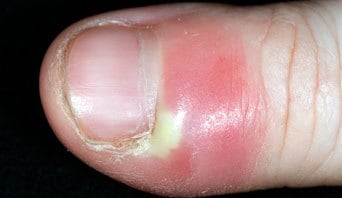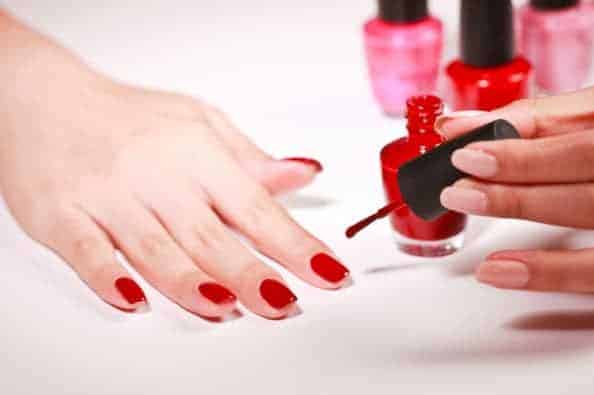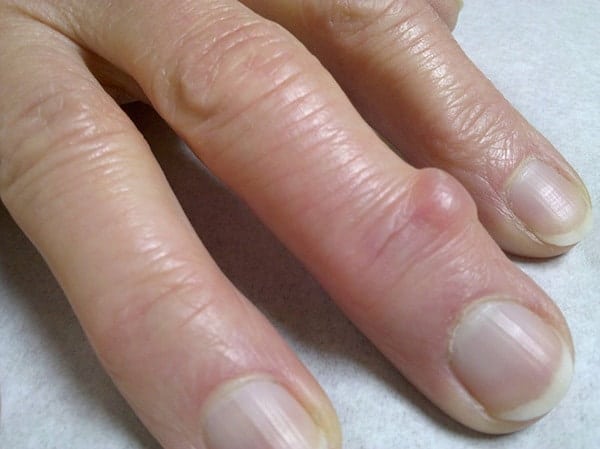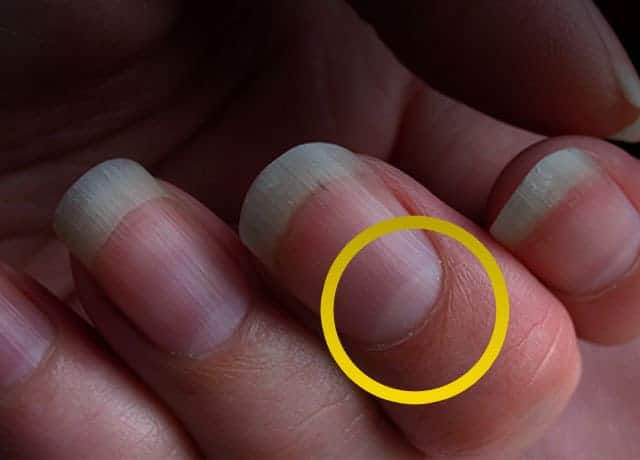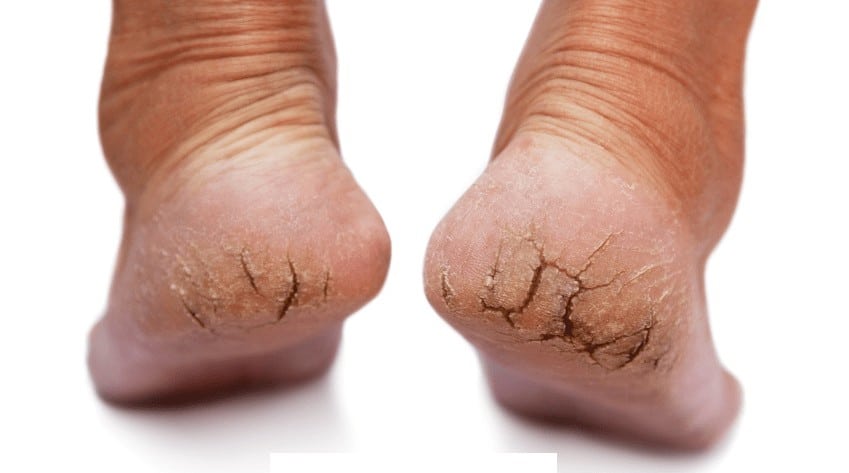Infected Cuticles: Symptoms, Causes & Treatments
Most of us will know infected cuticles as a nail infection. In medical terms, this condition is known as paronychia. This condition will manifest itself as its name indicates – an infection of the cuticles.
Paronychia affects the soft tissues and skin around the edges of your fingernails and toenails and is one of the most common bacterial infections that happen on the hands.
Infected Cuticles: The Signs You Must Know
While it is generally harmless and goes away on its own, cuticle infections can lead to a more severe infection that spreads to your entire finger or toe.
There are two different categories of infected cuticles, which are acute paronychia and chronic paronychia.
Acute Paronychia
An acute paronychia is usually caused by some trauma to the infected cuticles, which causes an open wound or weakening of the skin around your fingernails.
This opportunity can be taken by common Staphylococci and Enterococcus bacteria to enter the wounds, causing the infection to occur.
The trauma can be in form of nail-biting, manicuring gone wrong from cutting the cuticles too much. Sometimes, even having an ingrown toenail and hangnails can lead to a cuticle infection.
Mucous Cyst on The Fingers: Symptoms & Treatment
Chronic Paronychia
Chronic paronychia meanwhile has a longer onset time as compared to acute paronychia, and it can be caused by some fungal infections, which are usually caused by more than one infectious agent.
This can be from the Candida species of yeasts. If you often expose your nails to chemicals or water, keeping your cuticles in a moist condition, you will have a higher risk of getting this fungal infection, since these organisms thrive better in a moist environment.
Some pre-existing conditions will also heighten your risks for paronychia. As an example, if you are experiencing irritant dermatitis, which manifests as red and itchy skin, the irritation will allow opportunistic pathogens to enter your skin and cause an infection.
Having diabetes, a weak immune system or HIV will also increase your risks for a cuticle infection.
Symptoms of Infected Cuticles
There are some starting signs of a cuticle infection that you can look out for, especially if you have recently suffered some trauma or damage to your nailbed and its surrounding skin areas. You can experience some other noticeable signs also:
- Some swelling around your nails with some redness. This is the first sign of inflammation, common to most bacterial infections.
- Soon, you might find there is pus collected around the area, and the affected site will be painful and tender to touch.
- Some changes in your nail color, shape, texture or how your nails are attached to the nailbed.
- In case of chronic paronychia, you might notice your cuticles breaking down. As mentioned earlier, chronic paronychia will manifest itself within a longer timeframe and the infection takes place much more gradually than an acute condition.
Treatment Options for Paronychia
When you have infected cuticles in an acute manner, the painful symptoms can be relieved by soaking the affected site up to 4 times a day.
Since acute paronychia is caused by bacterial infections, you can expect to be prescribed some antibiotics.
However, if your doctor has performed a diagnosis and concluded that your paronychia is caused by a fungal infection instead, you will be prescribed antifungal medicines.
Follow these treatments also:
Cuticle Infection Treatment
- Pus and Abscess Need to be Drained: If the affected area has a huge abscess pocket, your doctor will usually numb the area with some anesthetics before draining the pus with a small incision.
Where necessary for the pus to be completely drained, the doctor might also remove a small portion of your nails.
Your doctor might also use insert a type of packing called a wick into your abscess so that pus can be continually drained from the spot, usually for about 24 to 48 hours. This will help to keep the abscess from reforming itself. - Consult a Professional: This condition can be caused either by fungus or bacteria, so it is crucial for your medical professional to know what they can prescribe to you.
As such, a doctor could send a sample of the pus collected in your abscess, especially if you are not responding to the current treatment options given to you.
This will help the doctor to more accurately determine the infectious agent in your skin and prescribe the best treatments for you. - Ask Your Consultant for A Cream: It is crucial that you keep your cuticles dry and protected from further exposure to harsh chemicals in case you have chronic paronychia.
Aside from an antibiotic or antifungal medicine, you might also be prescribed some creams that can protect your skin.
Infected Finger Cuticle Home Remedy
- Keep Away from Moisture as much as Possible: Always try to wear a glove so that your skin can be kept away from moisture fully.
Some of the more common antifungal medications include Lotrimin, Mycelex, and Nizoral, which you will need to apply for several weeks on a daily basis.
You can also expect steroid creams or a solution mix of ethanol and thymol which you can use to keep your nails & infected cuticles dry. - Infected Finger Treatment with Salt Water: Take a bowl of warm to hot water in there and add some Ipsum salt. Stir the salt until it dissolves in the water. Soak the infected finger as long as the water is warm.
After soaking for a while you should see some puss start to seep out from the fingers. Squeeze the puss out of the finger, as soaking in Ipsum salt helps to soften the finger and make it easier to puss out. - Remove Your Nails either Partially or Completely: In rare cases where the infection is more widespread and has caused paronychia to affect the area under your fingernails, your doctor might need to, so it is best for you to consult a doctor as soon as you notice the infection starting or spreading.
Related: How to Take Care of The Cuticles
We hope this article has helped you to understand the infected cuticles more than before.
However, to get a better, more visual idea of what paronychia is like, you can watch this video below to see how this condition manifests itself and how a surgeon drains the infection.
